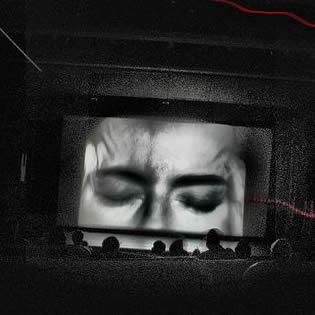As a kid growing up in the 50s and 60s, visiting the cinema was a near-magical experience. Gone were the golden days of the grand movie palaces of the 20s and 30s, but the local picture houses still provided a haven for adventure, drama, tears and laughter.
As my family did not buy a television until I was nine, I was brought up in a relatively TV-free environment. I was, however, privileged to have been adopted as a junior member of a film collectors and archivists ramshackle group. This enabled the watching many, many movies – some not usually screened either theatrically or on the dreaded box, let alone seen by a starry-eyed pre-teen.
Watching movies and going to the cinema was not fanciful escapism; there was something magnetic about the power of the projected image, amplified sound in a darkened auditorium. It was like entering a sacramental space.
Lining up outside – in all weathers, waiting to reach the box office, passing the garish posters and stills outside advertising forthcoming attractions – we were expectant. The anticipation built as we bought our tickets and were ushered to our seats in the stalls or on the balcony, depending on the movie.
We took in the faded décor and watched others file in – some shy of our public gaze, others playing up to it. And the smell! Some cinemas were regularly deodorised, either with a sweet-smelling powder or a pungent liquid spray, other less fortunate venues were unperfumed and left saturated with the aroma of stale cigarette smoke. The audience chatter grew to a chorus hum and then, as if by an invisible cue, we fell silent.
The spotlights dimmed, the house lights remained. The light beam from the projection booth shot through the auditorium, illuminating the slowly swirling cigarette smoke that was seconds before hidden, luminosity transforming empty shadows into an empire of light. The curtains opened mechanically, at a measured, insufferable pace. We sat through preliminary adverts, trailers, a cartoon, a short even, settling down yet still fidgeting. Then the curtains were drawn, the house lights dimmed and there was a momentary pause through the transitory darkness before an image flickered through the curtains and onto the screen.
The curtains reopened, the credit sequence rolls and the movie’s opening moments seize us.
We adjust, or try to, as the first image/sound imprints assault our senses, slaking our thirst for adventure, entertainment – or perhaps something deeper, more mysterious, more satisfying and even profound?
The preliminary building blocks of character and plot shepherd us in as we detect the unfolding narrative steps shaping a familiar opening story pattern.
We may not know the central plot of the screen story but the opening set up sends echoes of past-remembered movies and patterns. We try to imagine and identify the onscreen linear projection and eventual outcome, the narrative through-line, the broad-stroke enfoldment and maybe then we become aware of the emotional and psychological resonance from previous movies. We pick out the main character(s) – protagonist, love interest, antagonist, aides and adversaries – and begin to recognise their potential trajectories. We are absorbed, engrossed in unfamiliar yet compelling super-real worlds of gunslingers and Vikings, soldiers and spacemen, be-suited spies and vigilante cops, low down gangsters and swash-bucklers, all riding the range or journeying to the centre of the earth, on the high seas or across painted deserts, scaling the highest mountains or warp speeding to distant galaxies…
The journey through the screen story is perilous because we do not yet know the movie’s final destination. We therefore have to familiarise ourselves with the unexpected, we have to be prepared to endure the tension of the forthcoming conflict – to accept the threat and fear of tragedy and the struggle for life against the prospect or certainty of death.
If we detect omissions, divergences or unmotivated interjections the story flow is fractured and we fall into cavernous plot holes, ejecting us from the movie-watching experience and turning us against it, unless it can lure us back.
Ideally, we want to feel comfortable and secure within a well-realised movie where all the motivated plot, character and thematic options have been analysed, evaluated and arranged vertically, horizontally, sequentially and perfectly, as though their arrangement were effortless, natural and inevitable.
At best, dense psycho-emotive narratives are intricately sculpted through the passage of time, projecting us through this transformational rite to the concluding final ceremony – the end.
But beyond our immediate onscreen experience we may just become aware for a brief moment that watching a movie is not only a process of transformation -changing thoughts, ideas, emotions, characters and conflict into coherent stories – but also a voyage through movies themselves. Here we can come to understand and cherish the rich heritage bequeathed to us from past movie producers, screenwriters, technicians, actors and directors.
To get inside their world is to get inside ours a little, for the process of enjoying movies can be experienced as a personal journey of discovery into the world beyond and within ourselves, where outer and inner knowledge and experience can collide, converge and hopefully unite.
